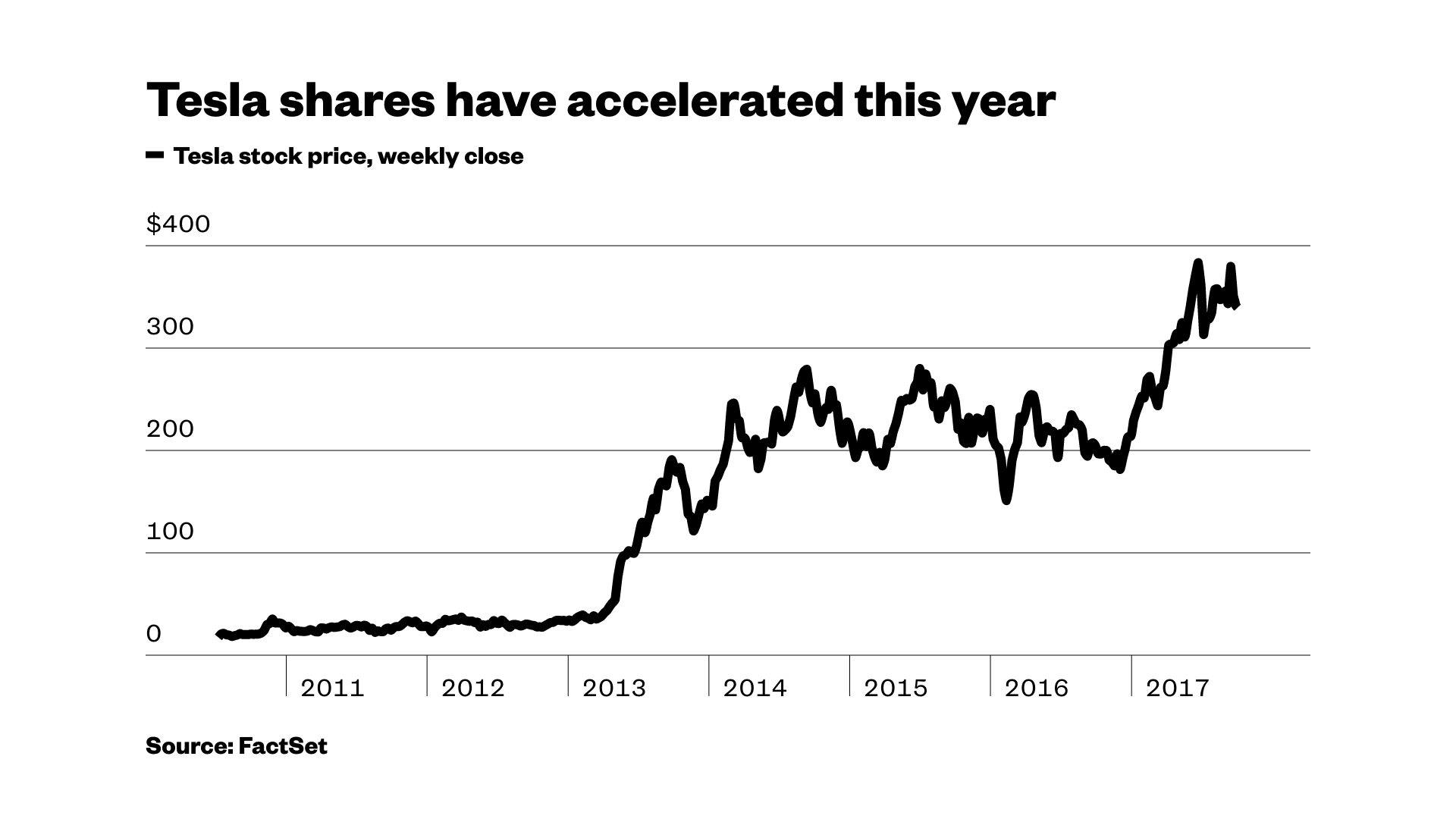Tesla’s push to serve more mass-market car buyers is off to a shaky start.The company said Monday evening that unspecified “bottlenecks” had led it to produce just 260 of its new Model 3 electric vehicles in the recently ended third quarter. That’s well below the company’s earlier production forecast of 1,500 cars, which start at $35,000, and well below Tesla’s other vehicles.Tesla founder and chief executive Elon Musk has often said that he aspires to serve mid-market consumers and thus sell cars in much larger volume over time compared to the relatively small luxury market that Tesla target with its early releases. The latest data were definitely a setback in that transition, but investors’ reaction was mixed.Tesla shares tumbled nearly 3 percent in early trading Tuesday, but recovered by late afternoon to post a 1 percent gain. Tesla recently traded above $345 a share, up more than 60 percent so far this year. Tesla was helped as the day went along by upbeat remarks from analysts at Morgan Stanley, who characterized the Model 3 production issues as par for the course for a new vehicle launch. The carmaker also rode the tide of a strong day for the stock market overall, with market benchmarks look set on their second-consecutive record high closing price.That momentum was apparently enough to counteract the verdict on Tesla from analysts at Goldman Sachs, who reiterated their “sell” rating on the carmaker Tuesday and lowered their financial forecasts for the company in the weak of its weak Model 3 production.Other notable developments:
Tesla was helped as the day went along by upbeat remarks from analysts at Morgan Stanley, who characterized the Model 3 production issues as par for the course for a new vehicle launch. The carmaker also rode the tide of a strong day for the stock market overall, with market benchmarks look set on their second-consecutive record high closing price.That momentum was apparently enough to counteract the verdict on Tesla from analysts at Goldman Sachs, who reiterated their “sell” rating on the carmaker Tuesday and lowered their financial forecasts for the company in the weak of its weak Model 3 production.Other notable developments: Those who bet Tesla shares will keep rising say that, while it is speculative investment, the bet could pay off quickly down the line once the company perfects its product formula. Judging by the performance of Tesla’s stock, that argument is currently winning.
Those who bet Tesla shares will keep rising say that, while it is speculative investment, the bet could pay off quickly down the line once the company perfects its product formula. Judging by the performance of Tesla’s stock, that argument is currently winning.
Advertisement

- Including all models, Tesla produced a company record 26,150 vehicles in the third quarter, up 4.5 percent from the year-ago period. Strong output of its Model S and Model X vehicles helped to offset the weak Model 3 production.
- For investors, the vehicle production numbers are a precursor to Tesla’s quarterly profit report, which isn’t due out for another several weeks. Tesla has been unprofitable through most of its life as a public company, dating back to 2010. It last posted a quarterly profit in the third quarter of 2016, when it earned $21.9 million, or 14 cents a share.
- Tesla posted net losses totaling more than $700 million through the first half of 2017. For the full year, analysts’ consensus expectation is that that the company will lose more than $1.5 billion, according to FactSet.
